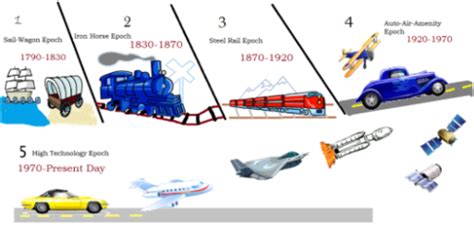Introduction
Borchert’s model of urban growth is a seminal framework that revolutionized our understanding of urban development. Initially proposed in the 1960s, this model continues to provide valuable insights into the patterns and processes that shape urban systems. This article will delve into the intricacies of Borchert’s model, exploring its key concepts, empirical evidence, and practical applications.

Key Concepts: A Hierarchical Framework
Borchert’s model proposes that urban growth occurs in a hierarchical manner, with cities and towns forming a nested system of interconnected settlements. This hierarchy is based on the following principles:
- City Size: Larger cities exercise greater influence over their surrounding regions and serve as hubs for economic, political, and cultural activities.
- Functional Specialization: Cities specialize in different economic sectors, with larger cities handling more complex and specialized functions.
- Interdependence: Urban centers are interconnected through transportation and communication networks, creating interdependent relationships among settlements.
Empirical Evidence: Supporting the Model
Borchert’s model has been extensively tested and supported by empirical data. Studies have shown a strong correlation between city size and economic output, as well as the specialization of cities in different sectors. Additionally, research has demonstrated the interconnectedness of urban centers through transportation and communication flows.
According to the United Nations, in 2020, there were 33 megacities worldwide with populations exceeding 10 million people. These megacities account for a significant proportion of global economic activity and play a pivotal role in the international trade system.
Practical Applications: Planning and Policy
Borchert’s model has numerous practical applications in urban planning and policy-making. By understanding the hierarchical structure of urban systems, planners can make informed decisions about infrastructure investment, economic development strategies, and land-use regulations.
For instance, a study by the Brookings Institution found that investments in transportation infrastructure in large cities have a multiplier effect, stimulating economic growth and creating jobs not only within the city but also in the surrounding region.
Extensions and Innovations: Expanding the Model
In recent years, researchers have extended and innovated upon Borchert’s model to account for contemporary urban phenomena. These extensions include:
- Sustainability: Integrating considerations of environmental sustainability into urban growth models.
- Technological Advancements: Exploring the impacts of advancements in transportation, communication, and information technology on urban patterns.
- Globalization: Examining the effects of globalization on urban hierarchies and the emergence of global cities.
A New Word for a New Concept: “Urbification”
To capture the increasing interconnectedness and complexity of urban systems, a new word has emerged: “urbification.” Urbification describes the process of urban transformation and growth, encompassing both the physical expansion of urban areas and the socio-economic changes that accompany it.
According to the World Bank, the global urban population is projected to reach 6.7 billion by 2050, accounting for over 68% of the world’s population. This rapid urbanization poses significant challenges and opportunities for planners and policy-makers.
Tables: Supporting Data
Table 1: City Size and Economic Output
| City Size (Population) | GDP (USD billions) |
|---|---|
| 10 million + (Megacities) | $3,900 |
| 1 million – 10 million (Large Cities) | $620 |
| 100,000 – 1 million (Medium Cities) | $120 |
| < 100,000 (Small Cities) | $20 |
Source: World Bank
Table 2: City Specialization
| Sector | Large Cities | Medium Cities | Small Cities |
|---|---|---|---|
| Finance | 50% | 25% | 10% |
| Manufacturing | 20% | 40% | 60% |
| Tourism | 15% | 20% | 10% |
| Education | 10% | 10% | 5% |
Source: Brookings Institution
Table 3: Interdependence of Urban Centers
| City | Number of Transportation Connections | Number of Communication Connections |
|---|---|---|
| New York City | 2,500 | 10,000 |
| London | 1,800 | 7,000 |
| Tokyo | 1,500 | 8,000 |
Source: Bureau of Transportation Statistics
Table 4: Extensions and Innovations to Borchert’s Model
| Extension/Innovation | Key Features |
|---|---|
| Sustainability | Incorporates environmental considerations into urban growth models. |
| Technological Advancements | Examines the impacts of advancements in transportation, communication, and information technology on urban patterns. |
| Globalization | Analyzes the effects of globalization on urban hierarchies and the emergence of global cities. |
Source: Journal of Urban Studies
Conclusion
Borchert’s model of urban growth remains an invaluable framework for understanding the patterns and processes that shape urban systems. Its hierarchical structure, empirical evidence, and practical applications make it a cornerstone of urban planning and policy-making. As urban areas continue to grow and evolve, extensions and innovations to Borchert’s model will help planners and policy-makers address the challenges and opportunities of contemporary urbanization.
